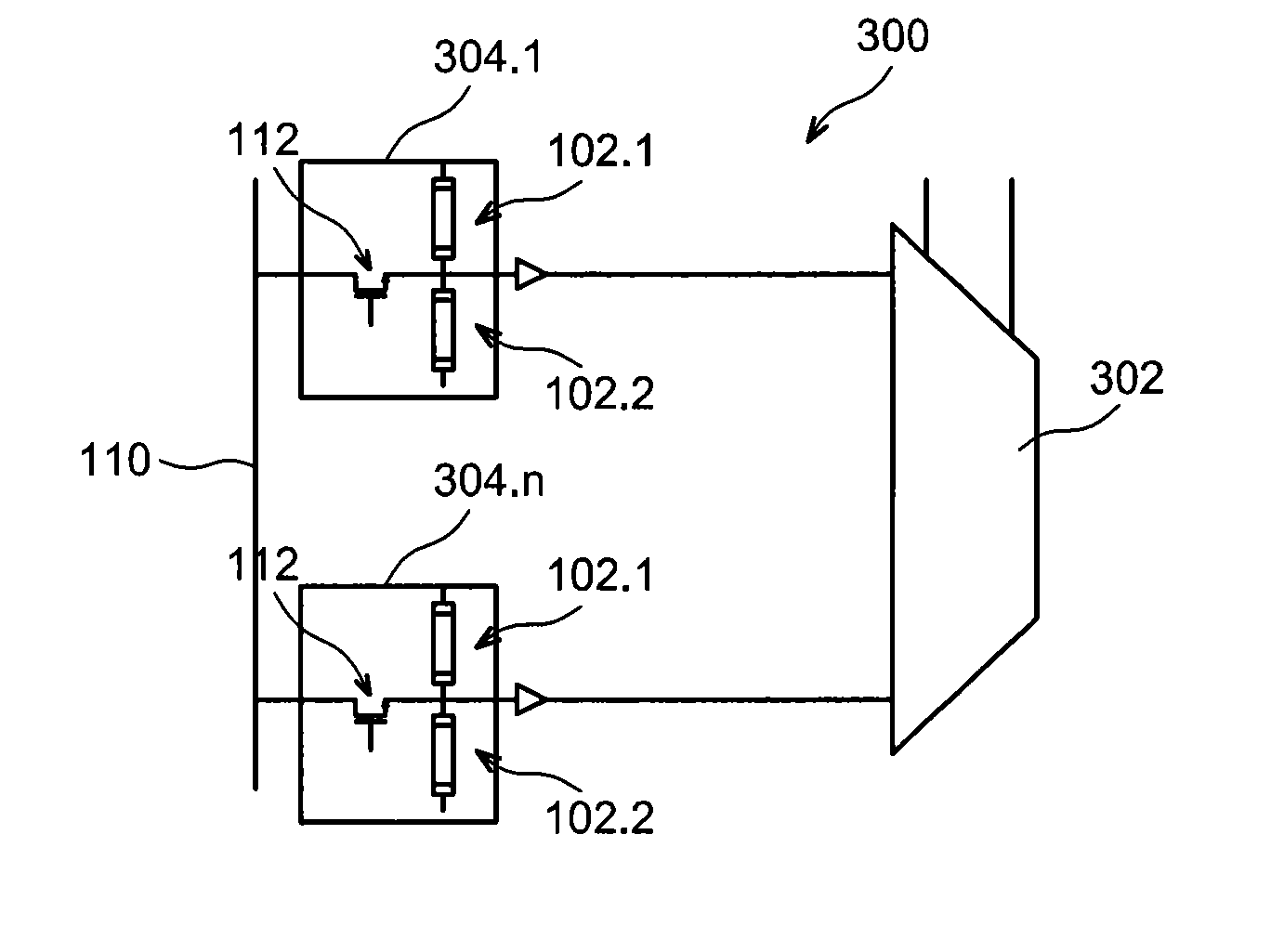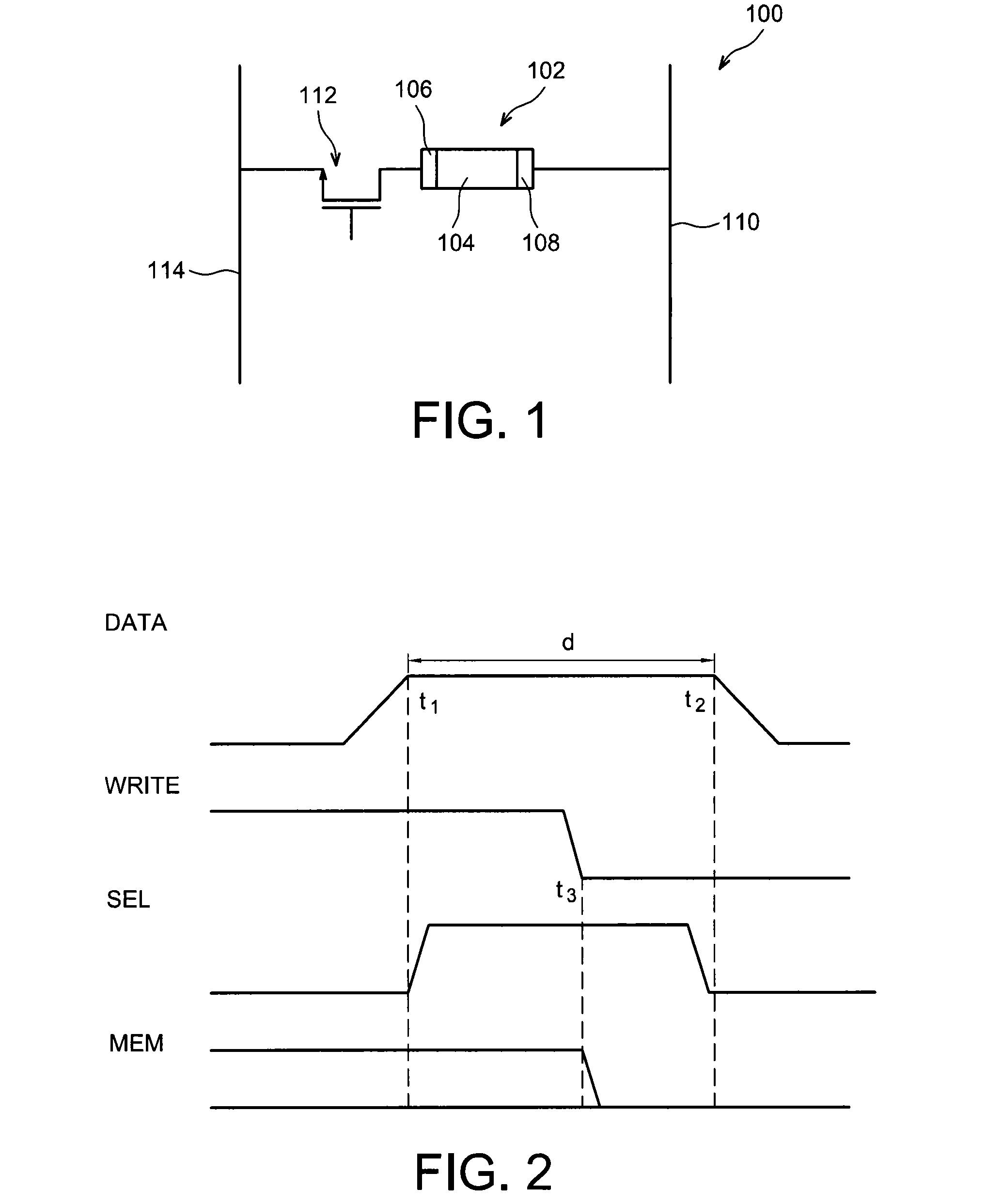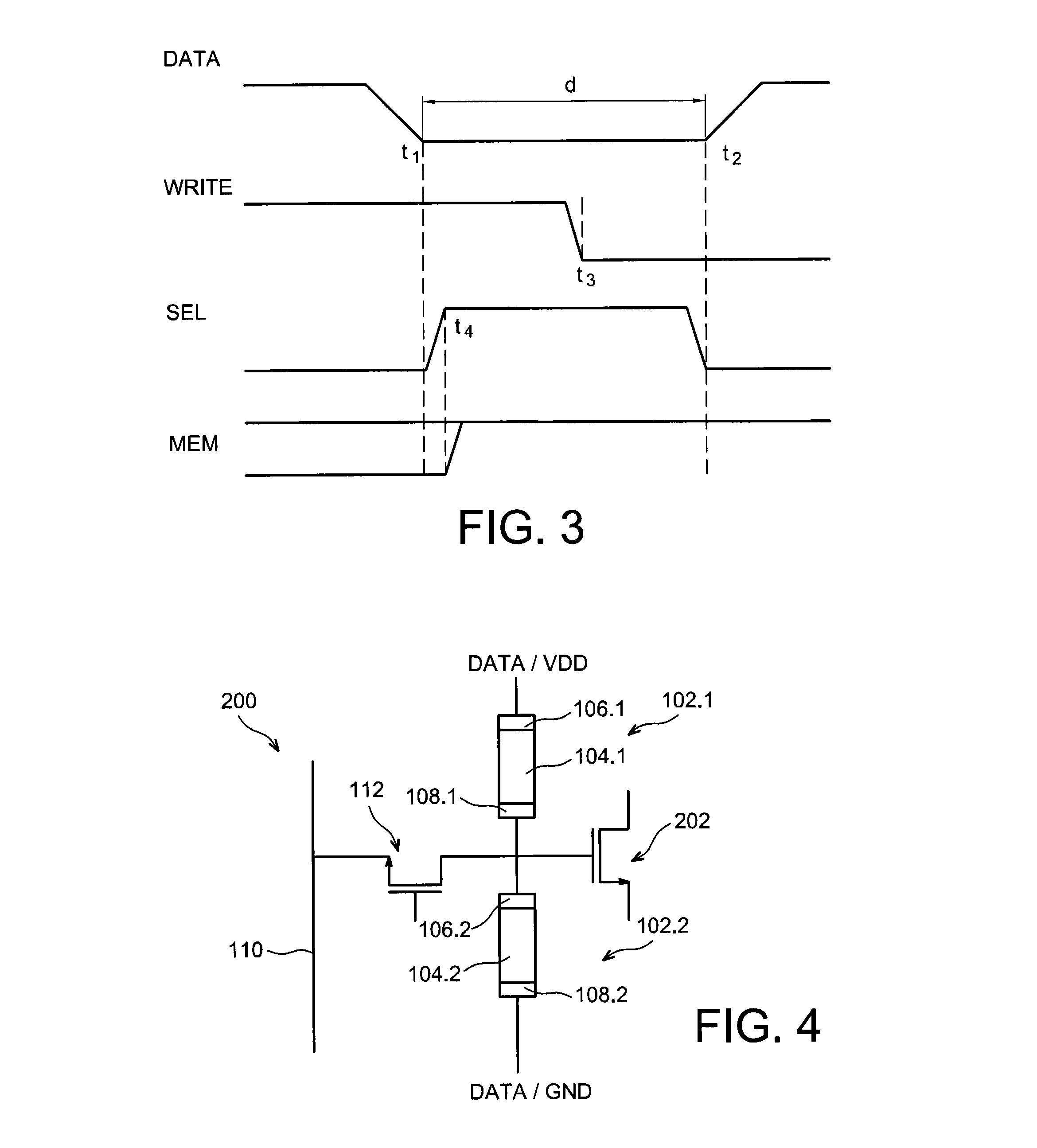Method for programming a bipolar resistive switching memory device
a memory device and bipolar resistive technology, applied in the direction of static storage, pulse generators, instruments, etc., can solve the problems of complex routing and switching circuits, bipolar programming memory devices, application of negatives
- Summary
- Abstract
- Description
- Claims
- Application Information
AI Technical Summary
Benefits of technology
Problems solved by technology
Method used
Image
Examples
first embodiment
[0050]FIG. 1 shows an electronic circuit according to the invention, comprising a bipolar switching non-volatile memory device intended to be programmed by implementing a programming method also according to the invention,
[0051]FIGS. 2 and 3 are chronograms for a memory device according to the first embodiment, obtained on implementing a programming method according to the invention,
second embodiment
[0052]FIG. 4 shows an electronic circuit according to the invention, comprising two bipolar switching non-volatile memory devices intended to be programmed in a complementary manner by implementing a programming method also according to the invention,
[0053]FIGS. 5 and 6 are chronograms for an electronic circuit according to the second embodiment of the invention, obtained on implementing a programming method for two memory devices, also subject to this invention,
third embodiment
[0054]FIG. 7 shows an electronic circuit according to the invention, comprising multiple bipolar switching non-volatile memory devices intended to be programmed in a complementary manner and in twos, by implementing a programming method also according to the invention,
PUM
 Login to View More
Login to View More Abstract
Description
Claims
Application Information
 Login to View More
Login to View More - R&D
- Intellectual Property
- Life Sciences
- Materials
- Tech Scout
- Unparalleled Data Quality
- Higher Quality Content
- 60% Fewer Hallucinations
Browse by: Latest US Patents, China's latest patents, Technical Efficacy Thesaurus, Application Domain, Technology Topic, Popular Technical Reports.
© 2025 PatSnap. All rights reserved.Legal|Privacy policy|Modern Slavery Act Transparency Statement|Sitemap|About US| Contact US: help@patsnap.com



